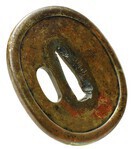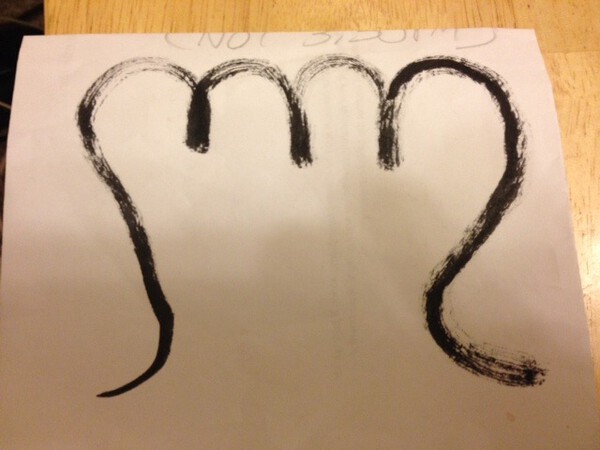-
Posts
2,442 -
Joined
-
Last visited
-
Days Won
21
Content Type
Profiles
Forums
Events
Store
Downloads
Gallery
Everything posted by Toryu2020
-
Repatinated not a problem - un-patinated a problem, I would expect they would not paper it in that condition. If you wish to confirm the workmanship you would get a pink and see what attribution was given on the worksheet. Swords dont have to be in perfect polish but the jigane has to be visible. Rust/patination on the nakago is crucial to determining age, do you imagine they would paper a signed iron tsuba that had been stripped to bare metal? I may be talking myself out of a commision here, but I would want to confirm with the team before submitting such a blade. Or expect a pink and hope for the confirmation of the workmanship, -t
-

NTHK 2015 Chicago Shinsa
Toryu2020 replied to Toryu2020's topic in Sword Shows, Events, Community News and Legislation Issues
Dear All Anyone waiting on their timeslot confirmations, I want to apologize, we had a flurry of registrations come in over the weekend. I will need to work those into the schedule before sending the confirmations out. If you are still on the fence about your submissions, now is the time to send in those registrations. Of course if anyone has questions feel free to contact me here or send us an email nthk2012@toryu-mon.com -t -
Inextricable from Japanese art, history, culture and politics - Its ALL sword related - looking very much forward to more learning from the great minds collected here! -t
-
Robert - The pictures don't help a lot, I know it is hard to capture jigane in a photo, these are a little too fuzzy. Since you are asking for opinions, I would posit Shinshinto based on the dimensions, what little jigane we can see and the condition of the the nakago. There was a lot of experimentation with shapes and styles in the late Edo period as a result of Suishinshi Masahide's call to revive the swords of old. Beyond this I could not begin to guess where it might have been made without better photos. A not so common shape so a very cool find in my book, -t
-

NTHK 2015 Chicago Shinsa
Toryu2020 replied to Toryu2020's topic in Sword Shows, Events, Community News and Legislation Issues
Folks Just a reminder, we are just over a month away from the Chicago Samurai Sword Show. I have heard from lots of people, that I look forward to seeing there. It has been ten years. If you are thinking of submitting items for shinsa now is the time to send it in to guarantee a good time slot. If you know folks back East not on this forum we do ask that you spread the word. Should anyone have questions you can message me here or send us an email: nthk2012@toryu-mon.com Cheers, -t -
Piers - I wonder if you have seen the latest episode of Rekishi Historia? How was it perceived by your Teppo mad brethren there in Japan? I should be interested to hear if it made an impact and what the perception was among gun collectors there. Cheers, -t
-
Robert - page 169 of the Shin Katchushi Meikan; "Nobuyoshi - Myochin Nobuyoshi Edo Jidai Sueki Ijuchi fumei Keireki fumei no Katchu Tanko nochi Tsubako tenjita mono rashiku [明珍信吉作] to hotta tsuba ga aru"
-
The key to remembering Kanefusa midare is the rounded heads of the gunome that contain ashi. Like the attached drawing, it is sometimes referred to as Kobushi (clenched fist) midare. fwiw -t
-
Fifty bucks? count me in!
-
Jason - Looks legit to me. Could still be a "Bring-back" even though it is an older blade. Listen to Grey, fatal flaws could still be hidden by that rust and only a trained polisher can tell you if it is restorable. Nice to have a good clean signature and a jumping off point for your learning. Old newspaper was used in the tsuka going back to the 1600's BTW, so don't make too much of those "prayer sheets" -t
-
Jesper - I think you are on the right track, I would agree the cross shape that dominates the piece is inspired by a spool. The artist it seems has deftly inserted hishi (diamond shapes) into the openings in a very nice treatment Ihave not seen before. For whats it is worth I like this a lot-t
-
Jonas a curious mei indeed - are you able to post close up photos of the signature? if youd rather email, you can send high rez images to my address nthk2012@toryu-mon.com cheers -t
-

Veli-Pekka Viitanen Has Passed Away
Toryu2020 replied to Jussi Ekholm's topic in General Nihonto Related Discussion
Always enjoyed his postings, we corresponded briefly and I had the pleasure to meet him the one time in Tampa. Always sad to lose a like-minded soul, a friend. Condolences to his family. -t -

NTHK 2015 Chicago Shinsa
Toryu2020 replied to Toryu2020's topic in Sword Shows, Events, Community News and Legislation Issues
Thank you Jason - we can always slip in one more blade. We are here for you if you need us -t -

NTHK 2015 Chicago Shinsa
Toryu2020 replied to Toryu2020's topic in Sword Shows, Events, Community News and Legislation Issues
Jason this post is for you! if you have any questions about the Chicago Shinsa do let me know. -t -
Wes there are sword clubs in L.A. and San Francisco that provide regular opportunities to study swords in all states of preservation but most importantly in newly polished and papered condition. The best way for you to learn is to get some background and vocabulary and then see and study as many swords in hand as you can. It is very hard to avoid the temptation to buy, i would not buy in this case and here is why: 1. the kissaki appears to have been poorly reshaped at some point - this might be fixable but maybe not without significant alteration. 2. the rust could be hiding hagire, hairline cracks, a fatal flaw, hard to see but impossible to repair. 3. if you spend a grand on the blade and two grand on restoration you'll have a three thousand dollar sword but not much more. this is a big gamble, listen to the many voices telling you to pass on this one unless you have lots of money to gamble with. if you are interested in attending a sword club meeting just let us know, -t www.ncjsc.org
-

NTHK 2015 Chicago Shinsa
Toryu2020 replied to Toryu2020's topic in Sword Shows, Events, Community News and Legislation Issues
Folks - Just a reminder that now is the time for registrations, as we are less than two months from the Chicago Show. Also I have updated the website with a hyperlink to the registration forms as some people had reported problems loading and printing the form. If you explore the website a bit you will see that we also updated the galleries, especially the armour page with pictures from our recent trips to Dallas and L.A. Should you have any questions about the shinsa, contact me here or thru the website, Thank you. -t -

An End To The Masamune Lineage
Toryu2020 replied to Ken-Hawaii's topic in General Nihonto Related Discussion
Ken et al- Yamamura Sensei has several dedicated students. So while we know it will not be his son, the esteemed reverend, it is not beyond the realm of possibility that there will be a 25th generation Masamune. It will be interesting to see if he passes on the name. -t -
i would have gone Satsuma with this piece looks a bit stouter than Osaka, and the nie is in keeping with their work... -t deliberate, i say.
-

who's the go to guy for habaki and fitting it to a saya
Toryu2020 replied to jason_mazzy's topic in Nihonto
Jason is it an art piece we are talking about? then definitely talk to Brian. if for a morepracticle item like an Iai sword, I would go with the DYI option myself. FWIW -t -
Beautiful piece, A pair of severed heads, not from Tameshigiri (Suimono-giri) but from battle. Very auspicious (for a head hunter). Two mimi? you guys miss nothing... -t
-
Nice find John, a piece well worth investigating. Hoping you'll be able to share some more photos, -t
-
A ceiling fan? Whatever it is I think it's cool. -t
-
Jan - Nothing wrong with your eyes, and mine it turns out. Thought I had made a mistake but indeed this is what it says in the book. No oshigata of that particular mei, something we may have to look for. I agree it is very strange since all my other references list Motoyasu as the third son of Motonao... -t



